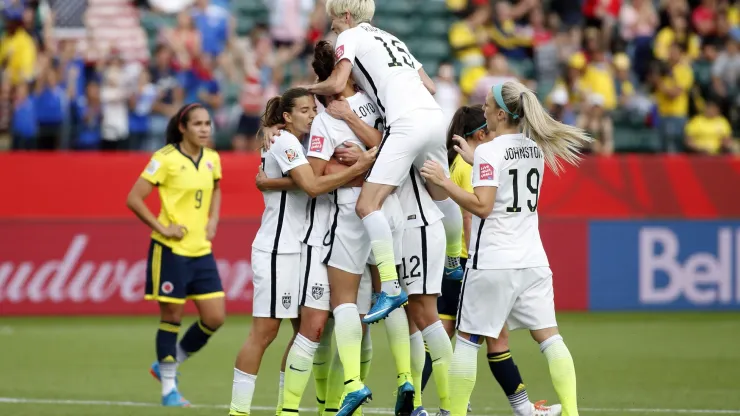With yesterday’s win over Colombia, the United States Women’s National Team (USWNT) has three wins and a draw in the Women’s World Cup, finished first in the Group of Death, and has shown it may have the strongest defense of any team in this year’s tournament.
Despite all of these positives, there are five worrying trends as the Yanks move from the easier Group and Round Of 16 stage to the Quarterfinals and beyond. For most teams these worries could be dismissed, but with the U.S.’s goal to win the entire tournament or else, these are five areas that cannot be easily dismissed:
1. Coach Jill Ellis has not given this team a tactical identity
In the first four games, the United States has begun each match tactically on the back foot. Formations and line-ups are constantly in response to the previous match and from kickoff it almost never seems like the U.S. is prepared for what their opponent will throw at them. A perfect example is the most recent Colombia match: Colombia came out in a high-energy press that disrupted the U.S.’s rhythm early on. It was obvious the strategy that they were going to use in the match: counter an older, more physical U.S. team by pressing and diving. In every case, the U.S. was able to make mid-match adjustments and do enough to win, but the time is coming when they will be equally matched in terms of talent, and late tactical substitutions may not be enough.
2. The U.S. can’t quit Abby Wambach
At some point, the gripes about the turf have to stop and serious questions have to be asked about the best U.S. soccer player ever. Yes, the service from the midfield has been poor but for someone who took months off to prepare for this tournament, Wambach has looked slow, her runs have been poorly timed, and she has tired quickly in matches. Her set-piece goal against an overmatched team has papered over the fact that she should probably be a super sub at this point. Going back to the previous point, can Coach Ellis make the hard decision to sit Wambach in an important match?
SEE MORE — Get your Women’s World Cup TV schedule and bracket.
3. What’s Plan B?
The loss of Megan Rapinoe and Lauren Holiday will give Ellis a chance to show she has a plan, but her substitution patterns are worrying. The commentators during the Colombia/U.S. match were praising the depth of the American bench because so many players had played, but instead what I am seeing is the coaching staff running out as many players as possible so they can all say they appeared in the World Cup. The U.S. can only win to succeed in Canada, but there is a concern here that an adequate Plan B or C when Plan A isn’t working isn’t developed or ready to debut.
[interaction id=”558975d6ab9dc6b4492e5437″]
4. The midfield and forwards have yet to sync
Regardless of who’s playing, there is a trend developing that the U.S. midfield isn’t providing enough service to the forwards. Granted, there have been times when the balls have led to fouls and set piece goals, but there has not been a constant enough pressure when it’s 11 v 11 to make a fan think that the U.S. can do this against better defenses.
5. No more cupcakes. Now the competition gets serious
The U.S. is a talented enough team that they could sleepwalk through the group stage and get a needed result. That changes now. China – the next opponent – has a history of giving the U.S. trouble. Awaiting the U.S. after that is Germany or France. If it’s Germany, they have to this point looked just as dominant in the women’s game as they do in the men’s game. In fact, the U.S., despite their World ranking, may be underdogs in the semifinals if they make it there. If the Americans cannot find an “A” game, they will lose. The question is, can they learn from the first four games (and numerous pre-Cup friendlies) and be ready to show that they are the #2 team in the World? If not, this will be another disappointing World Cup.
200+ Channels With Sports & News
- Starting price: $33/mo. for fubo Latino Package
- Watch Premier League, Women’s World Cup, Euro 2024 & Gold Cup
The New Home of MLS
- Price: $14.99/mo. for MLS Season Pass
- Watch every MLS game including playoffs & Leagues Cup
Many Sports & ESPN Originals
- Price: $10.99/mo. (or get ESPN+, Hulu & Disney+ for $14.99/mo.)
- Features Bundesliga, LaLiga, Championship, & FA Cup
2,000+ soccer games per year
- Price: $5.99/mo
- Features Champions League, Serie A, Europa League & Brasileirāo
175 Premier League Games & PL TV
- Starting price: $5.99/mo. for Peacock Premium
- Watch 175 exclusive EPL games per season






